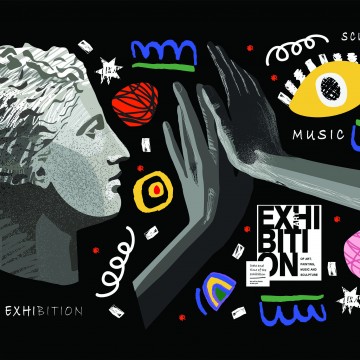

Year 12 Art: Making and Exhibiting Units 3 and 4
Overview
In this subject, you will be making artwork for exhibition. You will visit a minimum of 2 exhibition spaces throughout the year to learn about the role of the curator and an exhibition designer. In Unit 3, you will be researching artists and select artworks of your own interest, to inform your own artmaking and exhibition proposals. You will be exploring a range of materials, techniques, processes, ideas and subject matter to present to your class peers for critical feedback and reflection. These explorations and peer feedback will inform your art making in Unit 4, where you will exhibit at least one final artwork. In preparation for your own exhibition, you will visit an exhibition space and learn about preventative conservation and how artworks are cared for when they are on display and within a museum context.
Pre-enrolment form:
Part A: Student form – to be completed by student and guardian.
Who is it for?
This subject is for students who love exploring art materials, subject matter and ideas. If you are interested in presenting your artworks to audiences and thinking about making art for exhibition, you enjoy the coursework our class activities.
If you love Museums, Galleries and attending exhibitions to learn about Art, culture, history and the considerations of working with cultural heritage and artworks, then this class is for you.
What do you do?
- You will be exploring ideas, materials and techniques in order to make a body of artworks for exhibition.
- Researching artists to inform your own artmaking and curatorial focus. Curating your own exhibition.
- Attending artist workshops and education talks for specific exhibition case studies.
- You will also be sharing your work and participating in the critiquing of artwork for reflection and refinement of artwork.
What skills do you need?
- Creative thinking skills.
- Art-making skills.
- Collaborative skills
- Observational and listening skills.
What skills do you develop?
You will develop art-making skills, curatorial skills, creative thinking skills, as well as interpersonal skills through, collaboration, reflection and discussion.
Requirements
- A3 visual diary and appropriate storage device (including file management system)
- Basic stationery items: glue, scissors, markers, lead pencils and sharpener, eraser.
- A range of art materials and equipment for exploring artforms
- Camera or phone for documentation.
Pre-enrolment form:
Part A: Student form – to be completed by student and guardian.
Things to think about
Working in your visual art journal is a weekly and sometimes daily process for successful results in this subject. Students should be regularly documenting and reflecting upon their explorations of ideas, subject matter and materials, independently for a minimum of 3 – 5 hours per week.
Theory is also an important part of this course. Students can expect to commit to a minimum of 2 hours per week to cover the theoretical content of this course.
Things you can do now
Make a space for art-making and begin to collate your materials, ready for art making and exploration.
Visit art galleries and exhibitions, and start documenting things that you have seen in your visual arts journal.
Start taking notes and photographs of ideas that you find interesting for potential subject matter.
Contact the subject teacher contact (see above) to ask any questions you need clarification on about this subject, or which Art subject is more suited to you.
Things to have a look at
Top Arts student talk – former VSV student Miranda Plowman, 2023
Top Arts 2023 | Miranda Plowman | NGV
Former VSV student Miranda Plowman discusses her work displayed in the 2023 Top Arts exhibition at the National Gallery of Victoria
Top Arts student talk – former VSV school based student, Rufus Punton, 2023
Top Arts 2023 | Rufus Punton | NGV
Former school based VSV student Rufus Punton discusses his work displayed in the 2023 Top Arts exhibition at the National Gallery of Victoria
How curators went from caretakers to art stars
Curation is everywhere these days, but what is a curator anyway? Why do they matter? And what does curating actually mean?